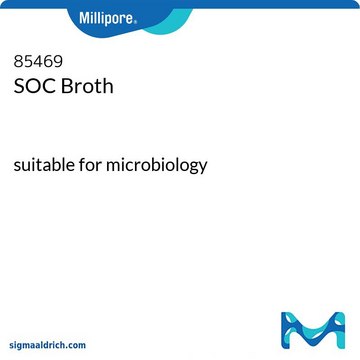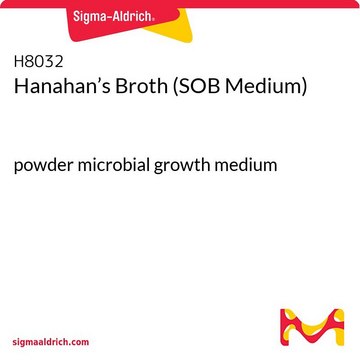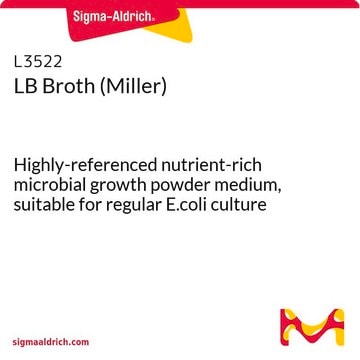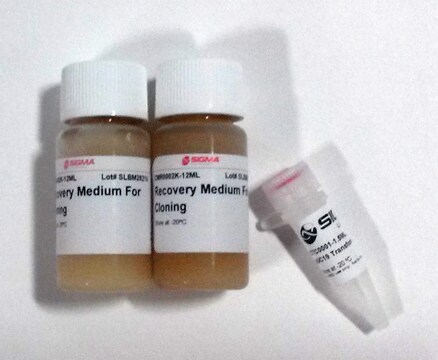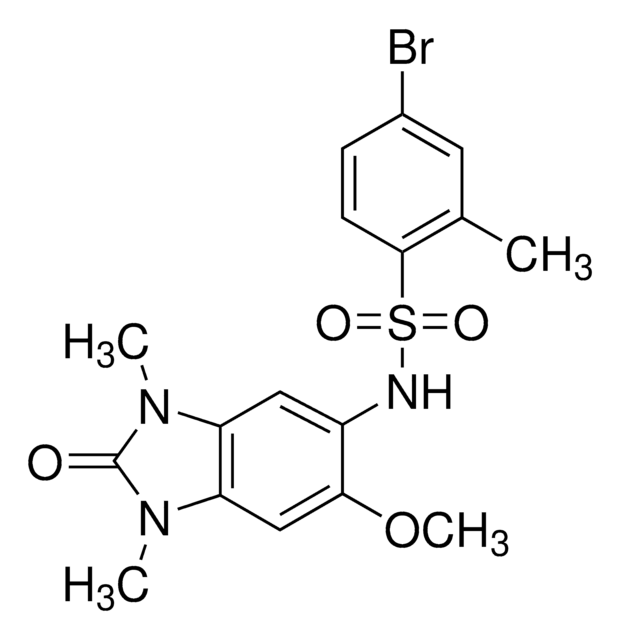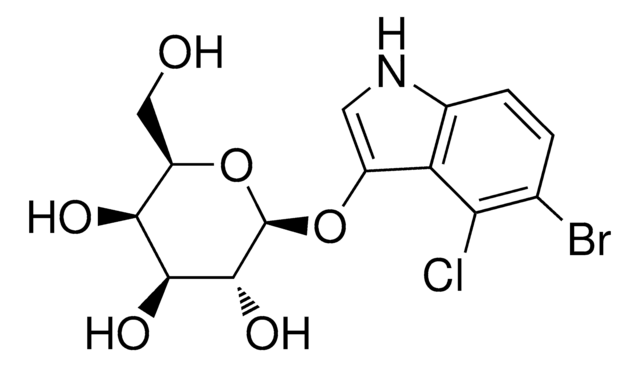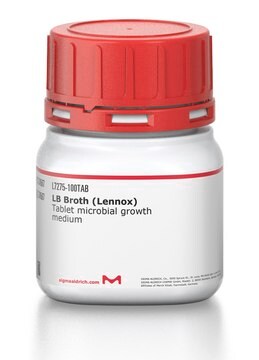S1797
SOC Medium
For use in transformation
Synonym(s):
Super Optimal broth
About This Item
Recommended Products
grade
for molecular biology
Quality Level
sterility
0.2 μm filtered
form
liquid
composition
Dextrose, 3.603 g/L
KCl, 0.186 g/L
MgSO4, 4.8 g/L
Tryptone, 20 g/L
Yeast extract, 5 g/L
technique(s)
microbiological culture: suitable
application(s)
agriculture
storage temp.
2-8°C
suitability
nonselective for Escherichia coli
nonselective for coliforms
General description
Application
Features and Benefits
- Filter-sterilized, ready-to-use format
- Convenient package sizes
- Standard formulation
related product
Storage Class Code
12 - Non Combustible Liquids
WGK
WGK 1
Flash Point(F)
Not applicable
Flash Point(C)
Not applicable
Certificates of Analysis (COA)
Search for Certificates of Analysis (COA) by entering the products Lot/Batch Number. Lot and Batch Numbers can be found on a product’s label following the words ‘Lot’ or ‘Batch’.
Already Own This Product?
Find documentation for the products that you have recently purchased in the Document Library.
Customers Also Viewed
Articles
General protocols for growth of competent cells and their transformation (uptake of DNA).
Protocols
Technical Article on competent cells. Transformation is a process by which some bacteria take up foreign genetic material (naked DNA) from the environment.
Our team of scientists has experience in all areas of research including Life Science, Material Science, Chemical Synthesis, Chromatography, Analytical and many others.
Contact Technical Service